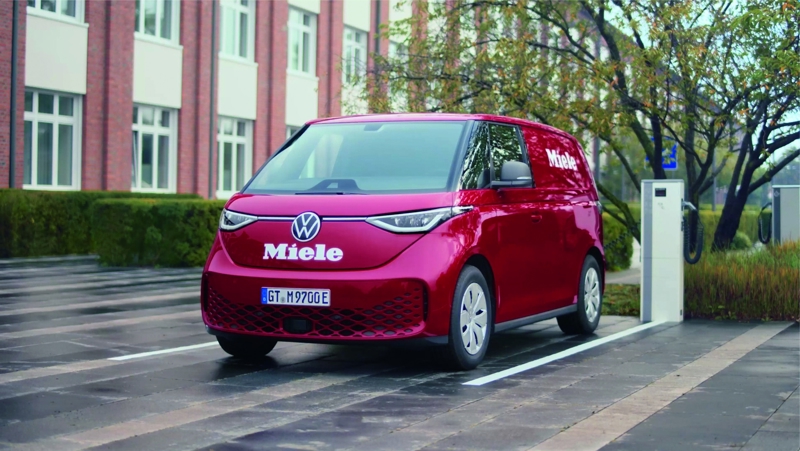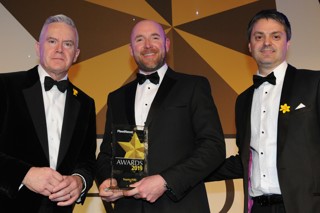
Since adding the responsibly of the fleet to her existing purchasing role at Miele Company five years ago, Mandy Vanstone has transformed its operation.
As well as implementing a string of initiatives to improve safety and compliance, reduce cost, increase efficiencies and setting the premium appliance manufacturer on the journey to electrification, she has also proved the importance of a dedicated fleet decision-maker.
So much so that when Vanstone, who is Miele Company’s purchasing and fleet manager and splits her time evenly between the responsibilities, retires in August, the organisation is to turn the fleet role into a dedicated, full-time one.
In 2022 her work was recognised with an Association of Fleet Professionals (AFP) bursary, and earlier this year Miele Company was named Most Improved Fleet in the Fleet News Awards.
“When I first took on fleet, my first task was to identify what we needed to act on quite fast,” she says.
“One of these was that we had a low percentage of fully-compliant drivers on our Riskmaster risk programme: less than half our drivers weren’t complaint.
“It not only meant they weren’t providing the information we needed so we could build driver profiles, but it also meant they weren’t putting their licence details in and that was the most alarming thing for me.
“So I was on a one-woman mission to get everyone 100% compliant, and we did, except one.
“That driver was quite rude to me on the phone and his manager said he’d chased and chased, but couldn’t get him to do it. He said it was against his principles.
“The manager said ‘well, just tell him to bring his keys in tomorrow and then he doesn’t have a job’, and lo and behold, he did it.
“He grumbled along the way, but he did it and we got everybody compliant and that, for me, was the first big win.”
New fleet management provider
Vanstone then set about appointing a new fleet management company, with IFC Fleet Services winning the contract.
“When you have a really good working relationship with your fleet company you realise the value of working with a really good team that really understands your business,” says Vanstone.
“Our account manager (Sallie Harkness) comes into Miele once a month and we hold a fleet day. It might be that drivers drop in because they know she will be there, and it works very well. It also allows us to do face-to-face planning.”
Vanstone also launched a new driver handbook and all new starters now undertake a comprehensive fleet induction so they know how to behave behind the wheel and what is expected from them right from the beginning.
Vanstone also launched bi-monthly fleet bulletins, giving drivers information and advice on a range of topics, such as seasonal driving.
Miele also has an MS Teams channel for fleet and this contains huge amounts of resources for drivers and their managers, while Vanstone also sends regular information out from the National Highways Driving for Better Business van driver toolkit, focusing on topics such as mental well-being. Miele also has its own landing page on the DfBB website.
The company uses data from telematics installed in all its cars and vans to monitor driver behaviour and trends, and this has resulted in lower claims costs and a reduction in insurance premium costs for four consecutive years.
Regional service managers receive driver behaviour training and now monitor the telematics data, allowing them to have detailed conversations with drivers and monitor behavioural changes as a result. This includes issues such as speeding and idling.
“The core of this work still happens within fleet, but we’ve got people supporting us, and the more people who support us, the more engaged everybody is within the business,” adds Vanstone.
In addition, she has created a critical incident protocol which sets our clear processes for handling serious crashes, including contacting next of kin.
Importantly, grey fleet drivers – the company has 30 – are treated the same way as the 44 company car drivers.
Planning for the future
When Vanstone retires next month, the fleet hotseat will be taken by James Walkington.
He joined the company seven months ago as fleet co-ordinator and has been working alongside Vanstone since then.
“This is great as it means we’ve had a good handover,” she adds.
As well as being fully-involved in running the fleet, he is working on many initiatives for the future, such as dashcams.
Walkington also intends to gain a better understanding of the issues faced by drivers by going out on vans with technicians.
“I was a company car driver many years ago, but things have changed a lot since that time, so I want to understand – from a first-hand perspective – some of the difficulties our drivers face being in vans,” he says.
“These may be blind spots, insurance scams, mopeds, cyclists, clean air zones; all that kind of stuff just so I can get a picture of what will help and what would hinder.
“From an office perspective, you might have an idea that you think is going to be absolutely brilliant, but in the real world it is just not feasible, or would essentially distract the driver more than it would encourage them to drive safely.”
Electrification journey begins
One of the challenges facing Miele is electrification, and the company’s journey is already underway.
By the end of the year more than half of its 44-car fleet will be fully electric, while last year it took on one Volkswagen ID Buzz electric van which was arranged by the Miele head office in Germany.
The UK operation potentially wants to order 10 more in the next few months to join the 160-strong van fleet in 2024.
For these, the fleet team is working with its supplier Sortimo to create the ideal racking solution.
“We are in the midst of a project which will see us get some firm answers,” says Vanstone. She has invited stakeholders, including its fleet management provider, regional service managers and heads of service, to spec up a vehicle that will be fit for the future.
“We’re looking at everything,” she adds. “One of the things that came up is that our technicians carry ladders in their vans and they take up a lot of space as they need an aperture to slide into.
“When we surveyed everybody, people said they didn’t like them, they didn’t feel safe. So we started looking at why we had the ladder and decided that a platform would be better, as well as half the cost.”
Another modification will reflect a change in operations: when the racking in its current vehicles was designed, Miele service engineers would carry care products such as fabric softeners which they would give to customers.
This has now been replaced by gifting clients vouchers for significant discounts on products, including free postage, when bought online.
“This means we don’t need space on the vans to store this stuff now, but we were having drawers and cupboards and racking fitted so we could carry all this stuff,” says Vanstone.
“These are the sorts of things we are referring to when we talk about fit for the future. It’s where us in fleet have learned to rope in everybody to make sure the vans are going to be exactly what we need.
“It’s also about getting driver engagement because we know that range anxiety is going to be a big thing for our technicians who are out on the road all day.
“It’s also about making sure our planning team know which drivers are in EVs so they can plan breaks for charging fitted into their days in order to meet their calls to our customers.”




















Login to comment
Comments
No comments have been made yet.